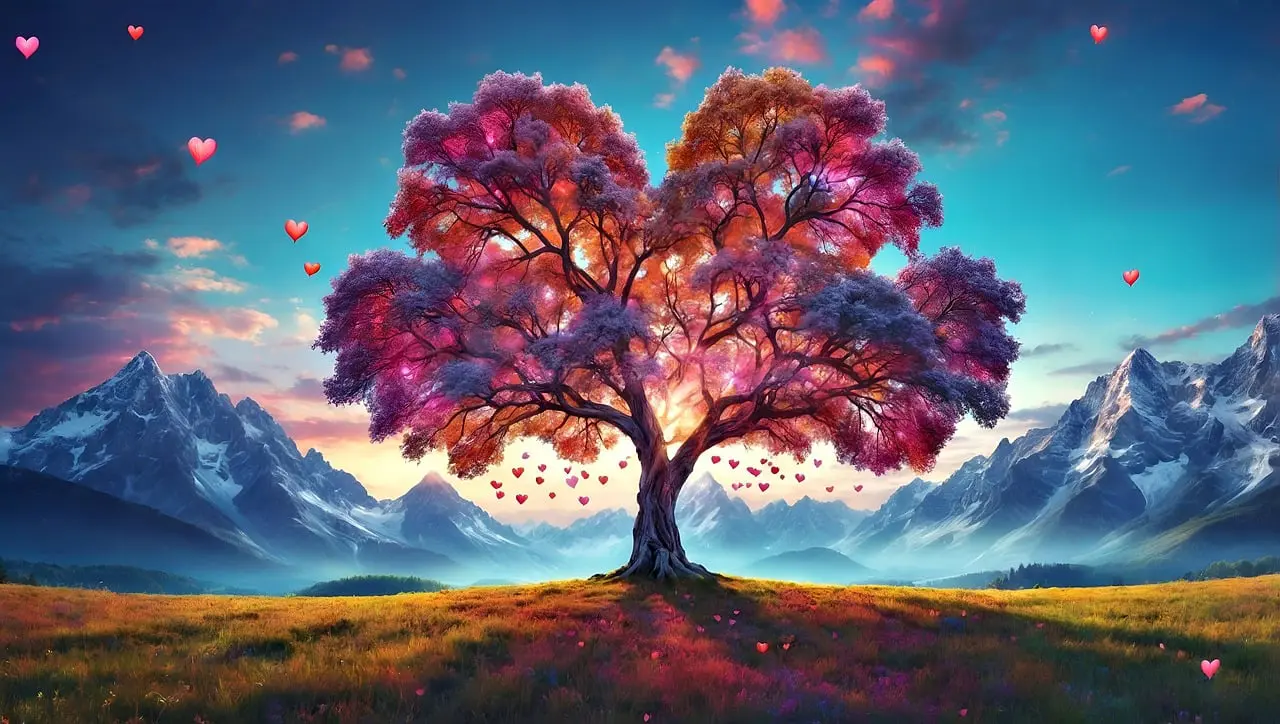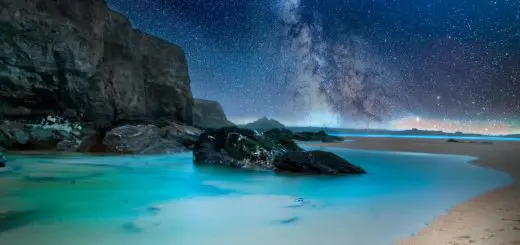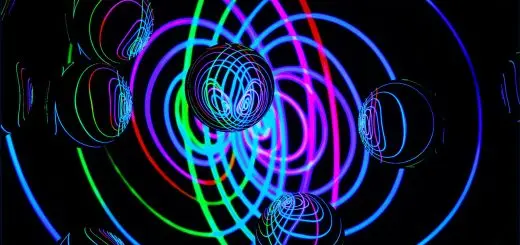Spiritual Meaning of Chichen Itza: Ancient Maya Wonder

Looking for more amazing products? Check out our online store and explore our collection here! Happy shopping!
Before diving in, please note: This post is for informational purposes only. If you’d like to know more about how we approach topics, feel free to check out our friendly Disclaimer Page.
Hey there, amazing readers! 
We’re committed to delivering quality posts, and your support (even just sticking around despite the ads) means everything to us. So, bear with us, and thanks for helping us keep the good vibes rolling. Now, on to the fun stuff!
TRANSLATE BUTTON AT THE END OF THE ARTICLE
Chichen Itza, the iconic archaeological site nestled in the Yucatan Peninsula of Mexico, is not merely a testament to the engineering marvels of the ancient Maya civilization.
Beyond its structural magnificence, this awe-inspiring wonder holds profound spiritual significance that continues to intrigue scholars and spiritual seekers alike.
In this comprehensive exploration, we will delve deep into the spiritual meaning of Chichen Itza, uncovering the mysteries of its past and its relevance in the present.
The Sacred Geography of Chichen Itza
Chichen Itza is strategically located, and its layout is intricately aligned with celestial events, serving as a powerful symbol of the Maya’s deep connection to the cosmos.
Its iconic El Castillo pyramid, dedicated to the feathered serpent god Kukulkan, is designed with 91 steps on each of its four sides, totaling 364 steps, with the platform at the top representing the 365th day of the solar calendar.
This precise alignment with the solar year highlights the Maya’s advanced knowledge of astronomy.
In the annals of ancient history, Chichen Itza stands as a monument to the spiritual wisdom of the Maya civilization.
The grandeur of this archaeological site is not just a testament to their architectural prowess but also a reflection of their deep connection to the spiritual realm.
Chichen Itza’s sacred geography is a testament to the Maya’s intricate understanding of the cosmos.
The alignment of the El Castillo pyramid with celestial events is a remarkable example of this spiritual connection.
The pyramid’s 91 steps on each of its four sides, totaling 364, and the platform at the top symbolizing the 365th day of the solar calendar highlight the precision with which the Maya tracked astronomical events.
This connection to the solar year was not merely a matter of scientific interest; it held profound spiritual significance.
The Maya believed that by aligning their earthly structures with the heavens, they could bridge the gap between the mortal and the divine.
Kukulkan: The Feathered Serpent Deity
The central figure in Chichen Itza’s spiritual landscape is Kukulkan, often depicted as a feathered serpent.
This deity symbolizes the duality of life, representing both the serpent’s earthly nature and the feathers that enable it to soar into the heavens.
Kukulkan, similar to the Aztec god Quetzalcoatl, is considered a benevolent god, associated with learning, wisdom, and the cycles of life.
Kukulkan, the feathered serpent deity, reigns supreme in the spiritual pantheon of Chichen Itza.
This deity, often depicted with a serpent’s body and adorned with feathers, embodies the duality of existence.
The serpent, in its earthly form, represents the material world and the base desires of humanity.
In contrast, the feathers symbolize the spiritual realm and the aspiration to transcend the limitations of the physical.
Kukulkan’s association with learning and wisdom makes him a revered figure in Maya spirituality.
The intertwining of knowledge and spirituality was a central theme in their worldview.
For the Maya, gaining wisdom and understanding the cycles of life were essential for personal growth and spiritual evolution.
Kukulkan served as a guiding light on this path of enlightenment.
Rituals and Sacrifices: Connecting with the Divine
Chichen Itza was not only a place of astronomical observation but also a sacred ground for religious rituals.
The Maya conducted various ceremonies, including human sacrifices, to appease their gods and maintain cosmic balance.
This practice, while gruesome to modern sensibilities, was believed to ensure agricultural prosperity and spiritual harmony.
The rituals and sacrifices that took place at Chichen Itza are some of the most perplexing aspects of its spiritual history.
The Maya believed that these acts were necessary to maintain the delicate balance between the earthly realm and the spiritual world.
They saw themselves as caretakers of this balance, responsible for ensuring the prosperity of their people and the harmony of the cosmos.
Human sacrifices, though shocking to contemporary sensibilities, were a central component of these rituals.
The Maya believed that offering human lives to the gods would secure their favor and blessings.
These ceremonies, often carried out on elevated platforms, were meticulously choreographed.
The victim, often a captive or a volunteer, would be presented to the gods in a carefully orchestrated manner.
Their hearts would be ritually removed, and their bodies would be cast into the sacred cenote, a natural sinkhole filled with water.
The Sacred Cenote: Gateway to the Underworld
One of the most intriguing features of Chichen Itza is the sacred cenote, a natural sinkhole filled with water.
This cenote served as a direct connection to the underworld for the Maya.
They believed that by making offerings and sacrifices in the cenote, they could communicate with the gods and ancestors in the afterlife, seeking guidance and blessings.
The sacred cenote at Chichen Itza, often referred to as the “Well of Sacrifice,” is a place of deep spiritual significance.
It is believed to be a direct link to the underworld, the realm of the gods and the ancestors.
The Maya considered this cenote as a portal through which they could communicate with these higher beings.
Offerings made in the cenote were diverse, ranging from precious objects to human sacrifices.
The belief was that these offerings would appease the gods and ancestors, ensuring their continued protection and guidance.
It was, in essence, a form of communication with the divine, a way for the Maya to seek blessings and insight from realms beyond the material world.
The Impact of Chichen Itza’s Spiritual Legacy
Chichen Itza’s spiritual significance extends far beyond its ancient origins.
Today, it continues to inspire contemporary seekers of wisdom, drawing people from around the world who are keen to explore the mystical and spiritual dimensions of this incredible site.
The teachings of the Maya and their connection to the natural world resonate with those who seek a deeper understanding of their own spirituality.
Chichen Itza’s spiritual legacy is not confined to the past; it reverberates through time to touch the hearts and minds of present-day seekers.
The wisdom of the Maya, their connection to the cosmos, and their intricate understanding of the spiritual dimensions of life continue to captivate those who embark on a journey to this sacred site.
Contemporary visitors to Chichen Itza often find themselves drawn not only to the architectural marvels of the past but also to the spiritual aura that envelops the site.
The echoes of ancient rituals and the profound symbolism that permeates the ruins offer a unique opportunity for introspection and spiritual exploration.
For many, a visit to Chichen Itza is not just a tour of an archaeological site but a transformative experience.
Chichen Itza in Modern Times: A UNESCO World Heritage Site
In recognition of its historical and spiritual importance, Chichen Itza was designated as a UNESCO World Heritage Site in 1988.
This designation not only acknowledges its archaeological value but also its enduring spiritual legacy that captivates the imagination of people worldwide.
Chichen Itza’s inclusion on the list of UNESCO World Heritage Sites is a testament to its multifaceted significance.
While its architectural and historical value is undeniable, the spiritual and cultural aspects of the site have played a crucial role in this recognition.
The UNESCO designation underscores the need to preserve not only the physical structures of Chichen Itza but also the spiritual and cultural traditions it represents.
Cultural Significance and Preservation Efforts
Efforts to preserve Chichen Itza, both as a cultural and spiritual treasure, have been ongoing.
Scholars, archaeologists, and spiritual practitioners collaborate to ensure that its ancient wisdom is not lost to time.
This dedication to preservation allows future generations to continue exploring its spiritual depths.
The preservation of Chichen Itza is a collective responsibility.
Scholars and archaeologists work tirelessly to unravel the mysteries of its past and safeguard its physical structures.
Simultaneously, spiritual practitioners and those who are deeply connected to the site’s spiritual essence contribute to the ongoing efforts to keep its wisdom alive.
Preservation goes beyond mere conservation; it involves a commitment to understanding and sharing the spiritual knowledge that Chichen Itza embodies.
This ensures that the lessons of the past continue to resonate with and inspire present and future generations.
Controversies and Challenges
Chichen Itza has not been without its controversies and challenges.
The influx of tourists and commercialization in the vicinity have raised concerns about the site’s preservation.
Striking a balance between accessibility to the public and safeguarding its spiritual sanctity is an ongoing debate.
The popularity of Chichen Itza as a tourist destination has raised complex questions about its preservation.
The need to accommodate the curiosity of travelers and share the site’s spiritual and historical significance with a global audience must be balanced with the imperative to protect its sanctity.
This challenge requires thoughtful management and planning to ensure that the spiritual essence of Chichen Itza remains intact, even as it welcomes visitors from around the world.
Chichen Itza and New Age Spirituality
In recent years, Chichen Itza has become a destination for those seeking spiritual enlightenment and transformation.
Many New Age practitioners visit the site, believing that its energy and history hold the keys to personal growth and awakening.
The allure of Chichen Itza extends beyond the realms of history and archaeology.
In recent years, it has become a pilgrimage site for individuals seeking personal transformation and spiritual growth.
New Age practitioners, in particular, are drawn to the site, believing that its energy and historical significance have the potential to awaken higher states of consciousness.
The New Age movement encompasses a diverse range of practices, from meditation and energy healing to shamanic ceremonies and yoga.
Chichen Itza’s spiritual vibrations and historical mystique align with the ideals of the New Age philosophy, making it a compelling destination for those who wish to explore the depths of their own spirituality.
Conclusion: Chichen Itza’s Timeless Spiritual Essence
In conclusion, Chichen Itza is more than just an archaeological marvel; it is a timeless testament to the spiritual wisdom of the ancient Maya.
Its sacred geometry, connection to celestial cycles, and enduring legacy as a place of transformation make it a treasure trove of spiritual insight.
As we explore its history, rituals, and cultural significance, we come to understand its role in both the past and the present, enriching our own spiritual journeys.
Chichen Itza, with its majestic pyramids, mysterious cenote, and rich history, invites us to contemplate the interplay between the material and the spiritual.
It prompts us to ponder the enduring human quest for connection with the divine and the ever-present yearning for knowledge and wisdom.
As you stand in the shadow of El Castillo and gaze into the depths of the sacred cenote, you can’t help but feel the echoes of the past and the timeless yearning for spiritual enlightenment.
Chichen Itza beckons us to explore the intersection of the earthly and the celestial, the tangible and the transcendent, making it a destination that transcends time and space.
FAQs about Chichen Itza
1.
What is the significance of the name “Chichen Itza”?
The name “Chichen Itza” is derived from the Maya language and has various interpretations.
One common translation is “At the edge of the well of the Itza people.” The “well” refers to the sacred cenote on the site.
2.
Are human sacrifices still practiced at Chichen Itza?
No, human sacrifices are not practiced at Chichen Itza or any other archaeological site today.
They were rituals performed by the ancient Maya for religious purposes, but they ceased with the arrival of the Spanish conquistadors.
3.
Can visitors still climb the pyramid at Chichen Itza?
As of my last knowledge update in January 2022, climbing the El Castillo pyramid was not allowed for preservation and safety reasons.
Regulations may have changed, so it’s advisable to check the latest guidelines if you plan to visit.
4.
What is the best time to visit Chichen Itza for a spiritual experience?
Many visitors find early morning or late afternoon to be the best times to experience the spiritual ambiance of Chichen Itza.
These times often offer fewer crowds and milder weather.
5.
Can Chichen Itza’s spiritual energy be felt by visitors today?
The spiritual energy of Chichen Itza is a subjective experience.
Some visitors report feeling a deep connection to the site’s history and energies, while others may not sense anything out of the ordinary.
It ultimately depends on one’s individual beliefs and sensitivity.
6.
What are the most important tips for respectful visitation to Chichen Itza?
Respectful visitation includes not climbing on or touching the ancient structures, following the rules and regulations set by the authorities, and being mindful of the site’s sacred and historical significance.
7.
Are there any spiritual ceremonies or events held at Chichen Itza?
While there are no official spiritual ceremonies held at Chichen Itza, some tour operators offer special experiences, including guided meditations and rituals, to help visitors connect with the site’s spiritual essence.
Check in advance for availability.
8.
What are the most recent preservation efforts at Chichen Itza?
Preservation efforts at Chichen Itza involve a combination of physical conservation and educational initiatives.
Restoration work is ongoing to protect the site’s structures, and educational programs aim to raise awareness about its historical and spiritual significance.
Collaborative efforts between experts, scholars, and the local community continue to play a pivotal role in these endeavors.
9.
How has Chichen Itza contributed to our understanding of Maya spirituality?
Chichen Itza has significantly contributed to our understanding of Maya spirituality through the insights gained from its structures, inscriptions, and artifacts.
It has shed light on their complex cosmology, religious rituals, and the interplay between their spiritual beliefs and everyday life.
The site continues to be a valuable source of information for researchers and scholars studying Maya culture.
10.
Can visitors participate in ceremonies or rituals at Chichen Itza?
Visitors are not allowed to conduct personal ceremonies or rituals at Chichen Itza without special permissions.
However, some organized tours and events, conducted by certified guides, may include spiritual activities and rituals as part of the experience.
It’s important to respect the site’s regulations and cultural sensitivities when participating in such activities.

The Enlightenment Journey is a remarkable collection of writings authored by a distinguished group of experts in the fields of spirituality, new age, and esoteric knowledge.
This anthology features a diverse assembly of well-experienced authors who bring their profound insights and credible perspectives to the forefront.
Each contributor possesses a wealth of knowledge and wisdom, making them authorities in their respective domains.
Together, they offer readers a transformative journey into the realms of spiritual growth, self-discovery, and esoteric enlightenment.
The Enlightenment Journey is a testament to the collective expertise of these luminaries, providing readers with a rich tapestry of ideas and information to illuminate their spiritual path.
Our Diverse Expertise
While our primary focus is on spirituality and esotericism, we are equally passionate about exploring a wide range of other topics and niches 

To ensure we provide the most accurate and valuable insights, we collaborate with trusted experts in their respective domains 
Our blog originally focused on spirituality and metaphysics, but we’ve since expanded to cover a wide range of niches. Don’t worry—we continue to publish a lot of articles on spirituality! Frequently visit our blog to explore our diverse content and stay tuned for more insightful reads.
Hey there, amazing reader! 
Check out our store here and take a peek at some of our featured products below! Thanks for being awesome!











